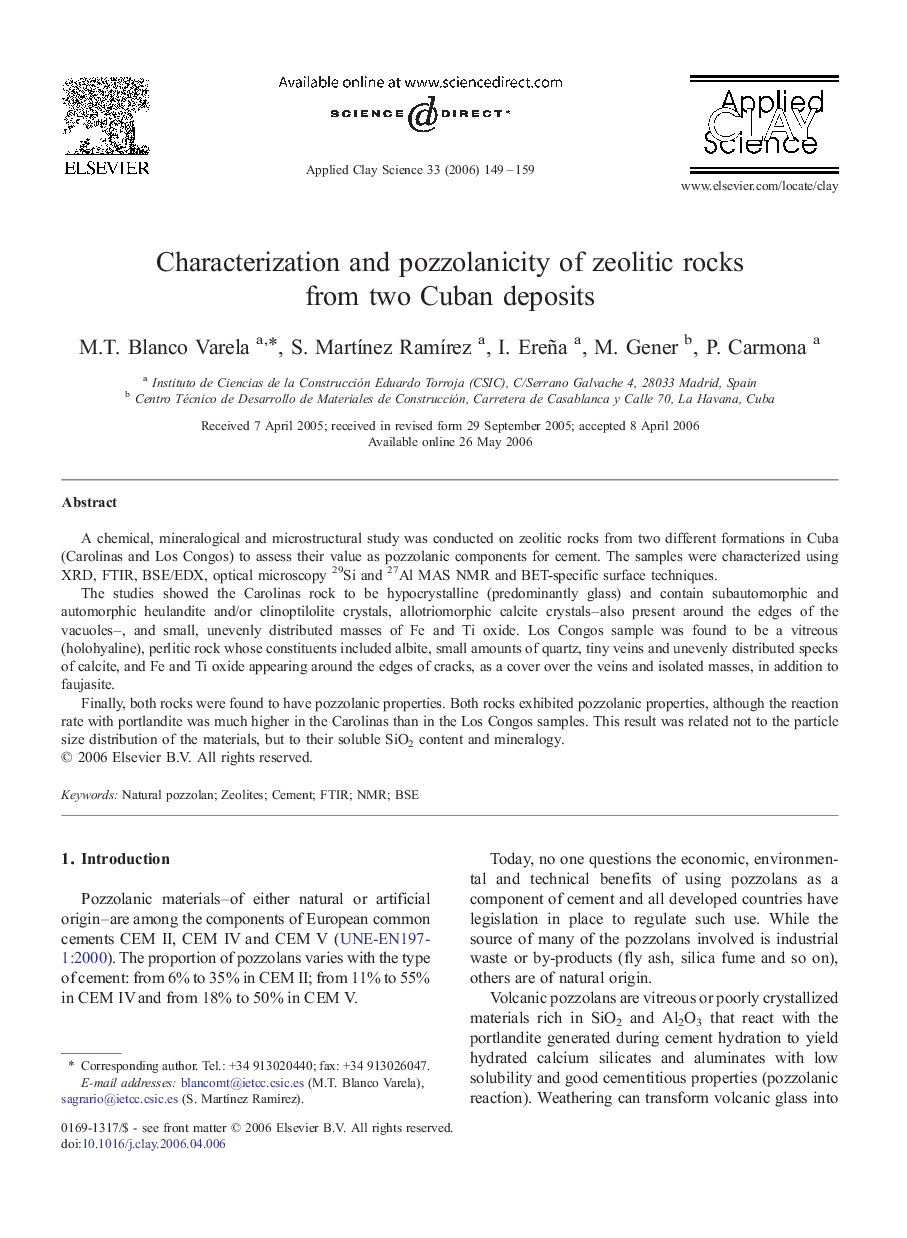| Article ID | Journal | Published Year | Pages | File Type |
|---|---|---|---|---|
| 1696654 | Applied Clay Science | 2006 | 11 Pages |
A chemical, mineralogical and microstructural study was conducted on zeolitic rocks from two different formations in Cuba (Carolinas and Los Congos) to assess their value as pozzolanic components for cement. The samples were characterized using XRD, FTIR, BSE/EDX, optical microscopy 29Si and 27Al MAS NMR and BET-specific surface techniques.The studies showed the Carolinas rock to be hypocrystalline (predominantly glass) and contain subautomorphic and automorphic heulandite and/or clinoptilolite crystals, allotriomorphic calcite crystals–also present around the edges of the vacuoles–, and small, unevenly distributed masses of Fe and Ti oxide. Los Congos sample was found to be a vitreous (holohyaline), perlitic rock whose constituents included albite, small amounts of quartz, tiny veins and unevenly distributed specks of calcite, and Fe and Ti oxide appearing around the edges of cracks, as a cover over the veins and isolated masses, in addition to faujasite.Finally, both rocks were found to have pozzolanic properties. Both rocks exhibited pozzolanic properties, although the reaction rate with portlandite was much higher in the Carolinas than in the Los Congos samples. This result was related not to the particle size distribution of the materials, but to their soluble SiO2 content and mineralogy.
